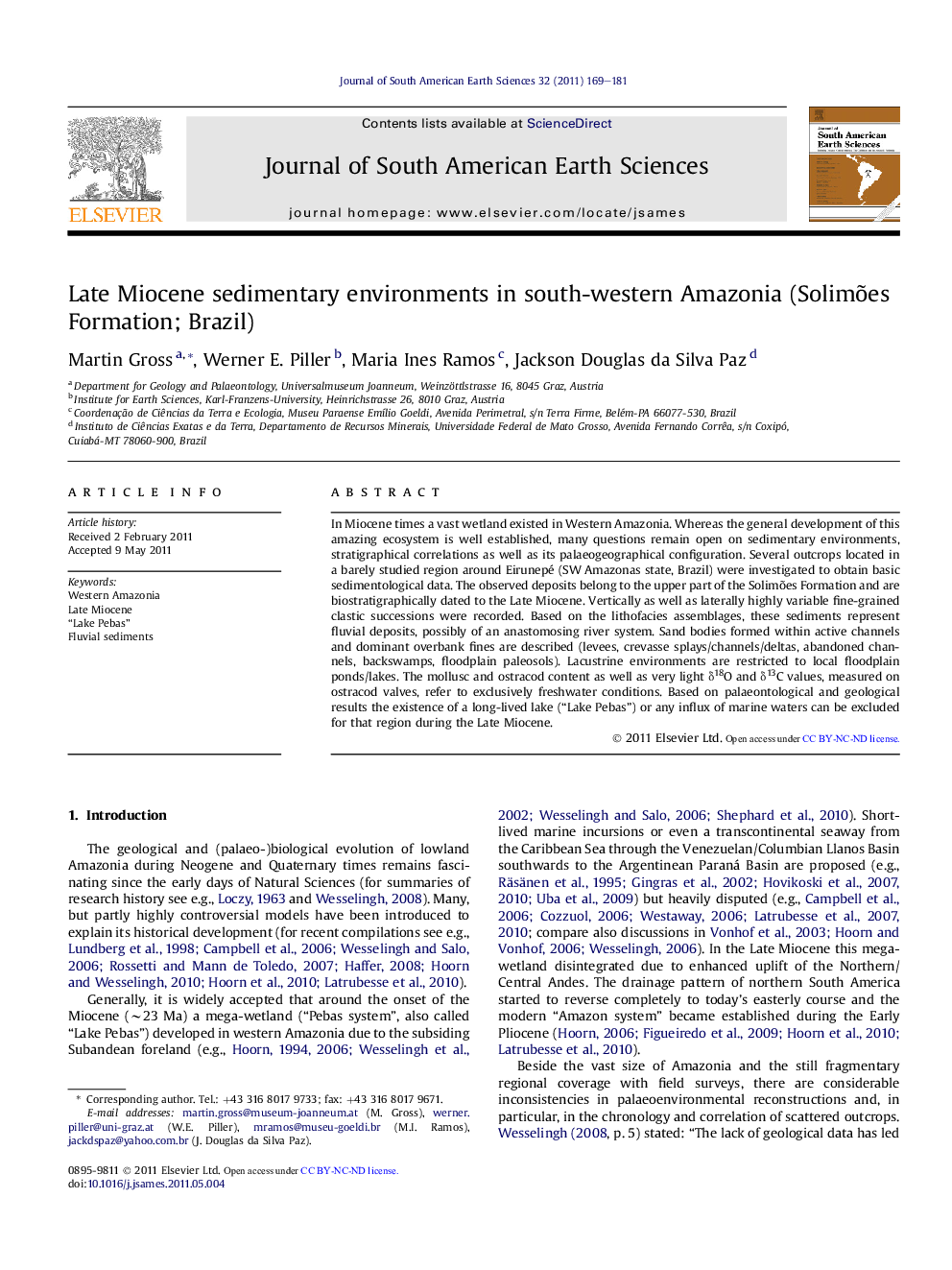| Article ID | Journal | Published Year | Pages | File Type |
|---|---|---|---|---|
| 6431514 | Journal of South American Earth Sciences | 2011 | 13 Pages |
In Miocene times a vast wetland existed in Western Amazonia. Whereas the general development of this amazing ecosystem is well established, many questions remain open on sedimentary environments, stratigraphical correlations as well as its palaeogeographical configuration. Several outcrops located in a barely studied region around Eirunepé (SW Amazonas state, Brazil) were investigated to obtain basic sedimentological data. The observed deposits belong to the upper part of the Solimões Formation and are biostratigraphically dated to the Late Miocene. Vertically as well as laterally highly variable fine-grained clastic successions were recorded. Based on the lithofacies assemblages, these sediments represent fluvial deposits, possibly of an anastomosing river system. Sand bodies formed within active channels and dominant overbank fines are described (levees, crevasse splays/channels/deltas, abandoned channels, backswamps, floodplain paleosols). Lacustrine environments are restricted to local floodplain ponds/lakes. The mollusc and ostracod content as well as very light δ18O and δ13C values, measured on ostracod valves, refer to exclusively freshwater conditions. Based on palaeontological and geological results the existence of a long-lived lake (“Lake Pebas”) or any influx of marine waters can be excluded for that region during the Late Miocene.
⺠Around Eirunepé (Amazonia, Brazil) six outcrops were sedimentologically investigated. ⺠The sediments are of Late Miocene age and belong to the Solimões Formation. ⺠Lithofacies assemblages document a fluvial sedimentary environment. ⺠Molluscs, ostracods and stable isotopes refer to exclusively freshwater conditions. ⺠The existence of a long-lived lake or any influx of marine waters can be excluded.
